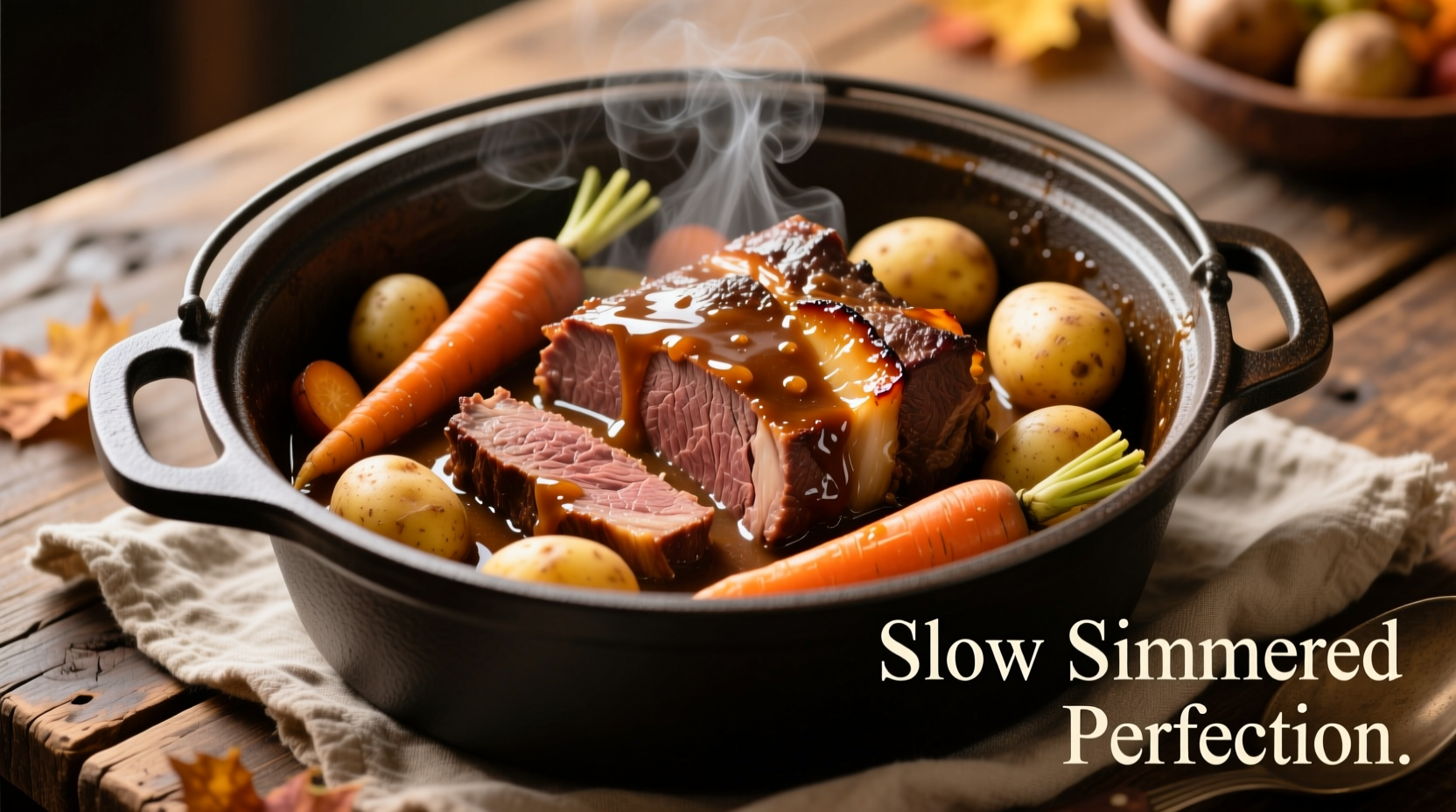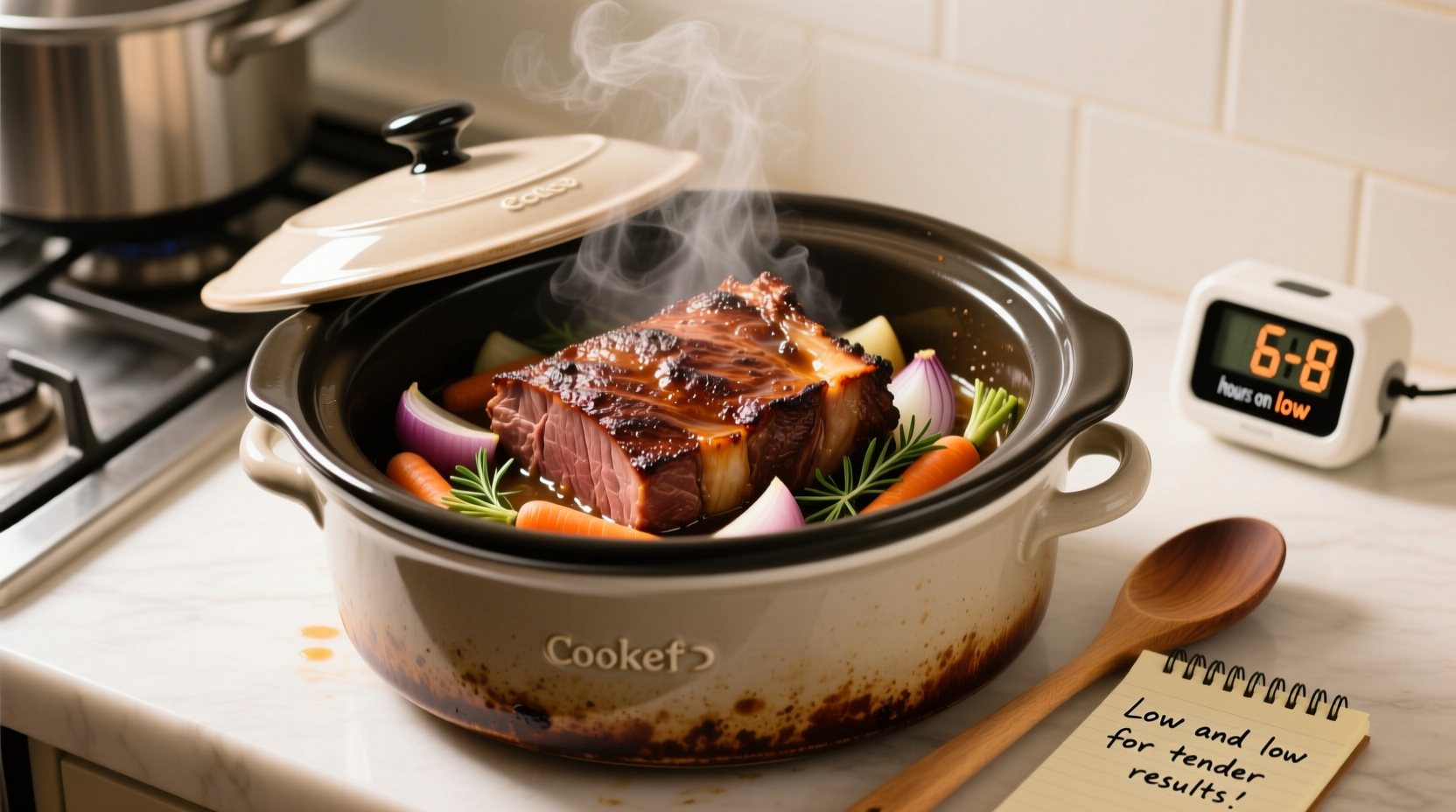A 2-pound roast requires 6-8 hours on LOW or 3-4 hours on HIGH in a crock pot to reach the safe internal temperature of 145°F (63°C) for medium-rare. This precise timing ensures tender, flavorful results without drying out your meat.
Perfect Crock Pot Roast Timing: Your Complete Guide
Cooking a roast in a slow cooker seems simple, but timing mistakes can lead to tough, dry meat or unsafe undercooking. For a 2-pound roast, understanding the exact cooking duration prevents kitchen disasters and delivers consistently delicious results. Let's explore the science-backed timing that transforms humble cuts into succulent meals.| Roast Weight | LOW Setting | HIGH Setting | Safe Internal Temp |
|---|---|---|---|
| 2 pounds | 6-8 hours | 3-4 hours | 145°F (63°C) |
| 3 pounds | 7-9 hours | 4-5 hours | 145°F (63°C) |
| 4 pounds | 8-10 hours | 5-6 hours | 145°F (63°C) |
Why These Exact Times Matter for Your 2-Pound Roast
The 6-8 hour LOW or 3-4 hour HIGH timeframe isn't arbitrary. According to USDA Food Safety and Inspection Service guidelines, slow cooking at these durations allows collagen to break down properly while maintaining moisture. Crock pots operate between 170°-280°F, significantly lower than conventional ovens, requiring extended cooking to achieve the same tenderness.Preparation Essentials Before You Start Cooking
Choose the right cut: Chuck roast works best for slow cooking due to its marbling. Round or sirloin roasts require more precise timing to avoid toughness. Pat dry and sear: Removing surface moisture and searing creates the Maillard reaction, developing complex flavors that simmering alone can't achieve. This step takes just 5 minutes but dramatically improves final taste. Season properly: Apply salt at least 45 minutes before cooking to allow penetration. Add herbs like rosemary and thyme directly to the pot for gradual flavor infusion.
Step-by-Step Cooking Process
1. Layer ingredients correctly: Place firm vegetables like carrots and potatoes at the bottom, then position the roast on top. This prevents bottom ingredients from becoming mushy while allowing the roast to cook in its own juices. 2. Add minimal liquid: Contrary to popular belief, you only need 1/2 cup of liquid for a 2-pound roast. Too much liquid dilutes flavors and creates steamed rather than roasted results. Broth, wine, or even water works well. 3. Set and forget: Once cooking begins, resist the urge to lift the lid. Each peek releases heat and moisture, potentially adding 20 minutes to your total cooking time. Modern crock pots maintain consistent temperature without intervention.Verifying Perfect Doneness
Thermometer testing: Insert an instant-read thermometer into the thickest part, avoiding fat pockets. At 145°F (63°C), your roast reaches medium-rare - the ideal temperature for maximum juiciness according to American Institute of Meat Cookery standards. Texture indicators: When properly cooked, a fork should meet slight resistance but slide in easily. The meat shouldn't fall apart completely - that indicates overcooking. Mandatory resting period: Let your roast rest covered for 15-20 minutes after cooking. This allows juices to redistribute, preventing dryness when slicing. Skipping this step can result in up to 40% moisture loss.Troubleshooting Common Roast Problems
Undercooked roast: If your roast hasn't reached 145°F after the minimum time, continue cooking in 30-minute increments. Never reduce cooking time based on appearance alone - temperature is the only reliable indicator. Dry or stringy results: This typically happens when cooking times exceed 8 hours on LOW. For 2-pound roasts, never exceed 8 hours regardless of crock pot size. Smaller roasts cook faster relative to their mass. Excess liquid: If your roast sits in too much liquid, remove vegetables and roast 30 minutes before completion, then set crock pot to HIGH to reduce the cooking liquid to a proper gravy consistency.Context Boundaries: When Timing Adjustments Are Necessary
While the 6-8 hour guideline works for most situations, these factors require timing adjustments:- Frozen meat: Add 2-3 hours to cooking time when starting with frozen roast
- Older appliances: Crock pots over 5 years old may run hotter; check temperature at 5 hours
- High-altitude cooking: Above 3,000 feet, add 15-30 minutes to compensate for lower boiling points
- Lean cuts: Eye of round requires 1-2 hours less than chuck roast to prevent drying
Frequently Asked Questions
Can I cook a 2-pound roast in less than 3 hours on HIGH setting?
Cooking a 2-pound roast for less than 3 hours risks undercooking and potential food safety issues. The minimum 3-hour HIGH setting allows collagen breakdown while reaching the safe 145°F internal temperature. Rushing the process creates tough, unsafe meat.
Why does my crock pot roast turn out dry even with proper timing?
Dryness usually occurs from insufficient fat content or skipping the resting period. Choose well-marbled cuts like chuck roast, and always let the meat rest 15-20 minutes after cooking. Cutting too soon releases precious juices that keep the meat moist.
Should I flip my roast halfway through cooking?
Flipping isn't necessary in a crock pot. The moist heat environment cooks evenly from all sides. Lifting the lid releases heat and moisture, potentially adding 20 minutes to cooking time. Trust the slow cooking process without interference for best results.
How do I know if my crock pot is running too hot or cold?
Test your crock pot's accuracy by filling it 2/3 full with water, setting to LOW for 8 hours, then checking temperature. Properly functioning units should read 185-200°F. If significantly outside this range, adjust cooking times accordingly or consider replacing the appliance.











 浙公网安备
33010002000092号
浙公网安备
33010002000092号 浙B2-20120091-4
浙B2-20120091-4